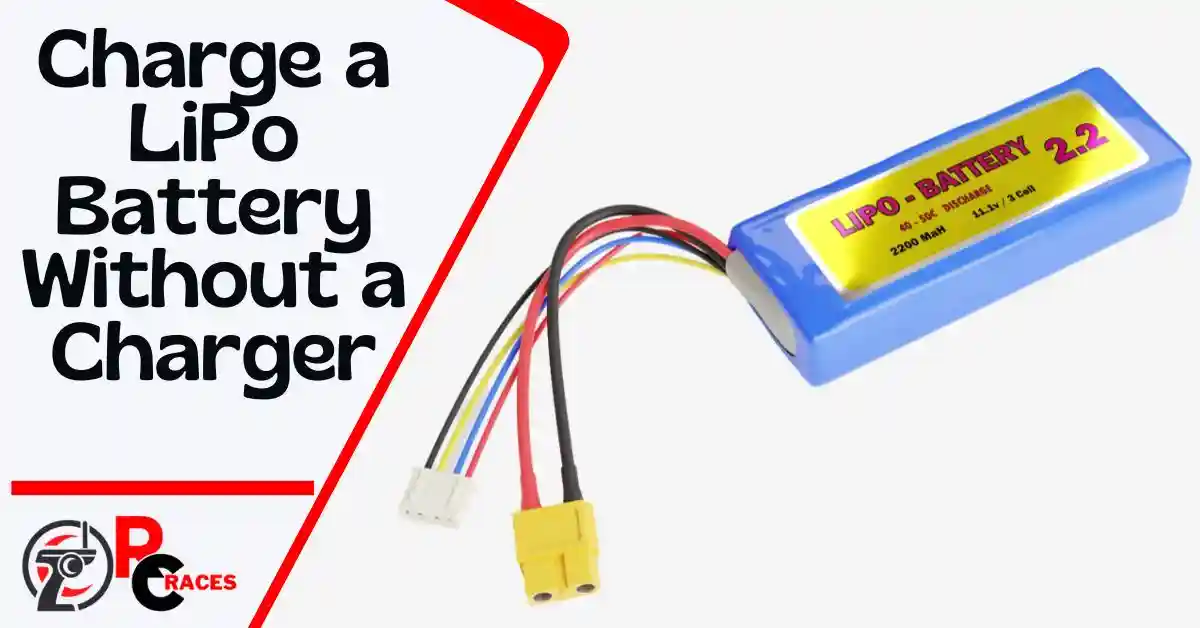Different chargers have different kinds of voltage according to their product needs. That’s the main reason we have different chargers for every electronic device. In the same way, lipo batteries have different types of voltage.
Because of that, they provide a charger with that. If you lose your charger, it might be tough to acquire a replacement.
You are asking how to charge a lipo battery without a charger.
The Lipo battery may be charged through a USB connection. Instead, alternate energy sources can be used. You might also use a free and open-source electrical meter. Solar panels can also be beneficial. Ensure safety guidelines are followed. If necessary, seek expert assistance.
I discussed the four techniques above, but there is additional information below. You can choose anyone you want. Let’s go to find out everything about it.
Four Ways to Charge a Lipo Battery Without a Charger
You’ve misplaced your lipo battery charger and need to charge the battery right away. Other chargers won’t work with the lipo battery. But there are four ways you can do it without a charger.
These four ways are really handy. You can find it at home, which will be a key advantage. Let’s go through those four options and how you plan to use them.
1. Making Use of a USB Port
One of the simplest ways to charge a battery is via USB. It’s just as helpful and secure as a standard charger.
Take a USB cord and a spare motor or tool with you. In this case, the guest tool is the power stream. Multiple hosts, most commonly PCs, printers, or vehicle radios, are utilized. Cameras and power banks can also serve as hosts.
First, connect the wire’s broader edge to the port on your host. And the gadget being charged is smaller. The battery will then begin to set.
It should be noted that USBs can only charge one single small battery at a time. This is due to the USB port’s maximum discharge current of 500 mA.
2. Alternative Energy Charging
One of the ways to charge spare batteries without a charger is to be ecologically responsible. Electricity from the solar charger may be purchased for less than $20.
However, these chargers are larger than typical lithium-battery chargers. It could be a better choice for something you use less regularly. Such as a camera charger rather than for daily phone charging.
A hand-crank charger is another alternative that saves electricity while also providing exercise. These are significantly bigger than even a solar-powered charger. So, you won’t be able to take them with you.
3. Battery Charging Using a Power Source
A power supply can be used to make a homemade drill charger. You can charge an extra battery without a phone charger if you’re a brave DIYer.
The voltage you will require based on the number of cells must first be carefully calculated. Your battery will be powered up once the current drops. It will power up to 3 per cent of the current it is rated to hold.
A lithium-ion battery usually involves 4.20 volts per cell. It’s crucial to keep an eye on the battery while it’s being manually charged in this manner. Never keep your battery plugged into a power source for more than a few hours.
4. Using a Solar Panel to Charge
Using a solar panel to charge your LiPo battery is secure. All you need to buy, in this case, is a charging controller. A solar panel cannot charge your battery in the absence of a charging controller. Otherwise, invest in a high-quality solar inverter.
Solar panels are one of the best ways. It will assist you in saving a significant amount of power. Here are some excellent ideas if you are seeking to purchase solar panels.
| ECO-WORTHY Solar Panel 25W | Check on Amazon |
| Waterproof 12W Solar Battery Charger | Check on Amazon |
These products have very good reviews. People re-purchase it, and a big sale is going on!
We’ve finished outlining every technique for you. However, you must adhere to the following safety precautions while working on them.
I talked about the four ways below and how you will process them. Now, we will give you some tips that will help you to avoid any kind of occurrence. Let’s know those.
Four Tips for Your Safety
Maintain your safety while the battery is being charged. Here are some ideas to get you started.
Tip 1: Make Sure the Correct Current Regulator
Make sure to get a reliable power controller. Ineffective controllers won’t stop the unnecessary flow of current. This could cause a battery defect so check for the discharge rate of the lipo batteries.
Tip 2: Guard Your Face And Eyes
Wear eye protection to keep your eyes safe from flashes. To avoid breathing in toxic smoke, put on a mask. You can also use metal shields, which will help you protect your eyes and face.
Tip 3: Don’t Let the Charger Go Unattended
Don’t charge your battery for more than one hour at its maximum voltage. For one hour, don’t leave the charger unattended. Your battery might have been overcharged. Additionally, your battery may be harmed.
Tip 4: Don’t Go Over the Limit
Avoid charging any devices that consume more than 500 mA of current. This will exceed the port’s maximum current. The voltage of your host will drop. A system loss could result from this.
FAQs
A lithium-ion battery requires what sort of charger?
The good news is that almost all of the batteries you’ll encounter are 4.2V. A 4.2V charger may also be used for both lithium-ion and lithium-ion polymer batteries. If you come across a 4.35V battery, use a 4.2V charger to charge it up to 4.2V, which is entirely safe.
Do you require a lithium battery charge controller?
Similarly, a lithium-ion solar charge controller is necessary for LifePO4 batteries and lithium-ion batteries. With technical innovation and chemical alternatives for high efficiency. There are several types of batteries on the market.
Is it possible to link an inverter to a charge controller?
You must not connect a power inverter directly to a charge controller. Charge controllers require a battery as a reference to regulate the input of the solar panel. You must first attach a battery to your charge controller before connecting a power inverter.
Is a DC to DC charger required for lithium batteries?
If you own or are considering purchasing a lithium battery, you must utilize a DCDC charger. The smart power phases will also extend battery capacity and efficiency, whether or not devices are used.
EndNote
Well, now you know how to charge your lipo battery without a charger. We attempted to address all of the various approaches and questions you could have.
Choose a technique that is feasible for you. If you read the instructions attentively, you will do it on your own easily. Be careful when you work with power sources and solar panels.
Take care of yourself. Do leave a comment if you have any more confusion.
Goodbye!


